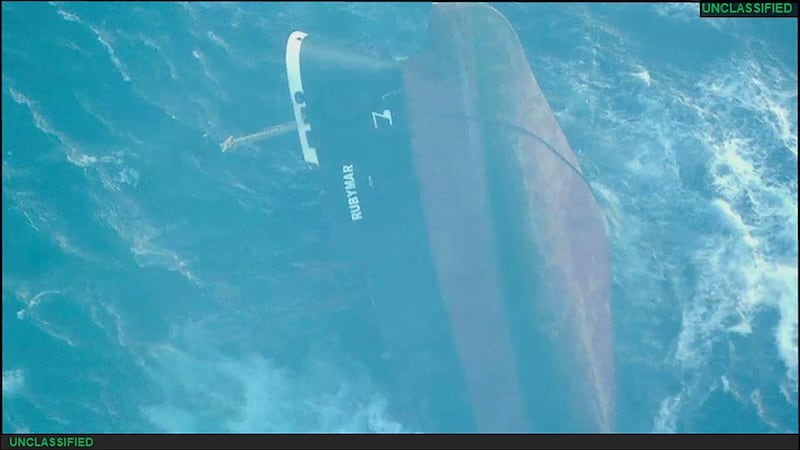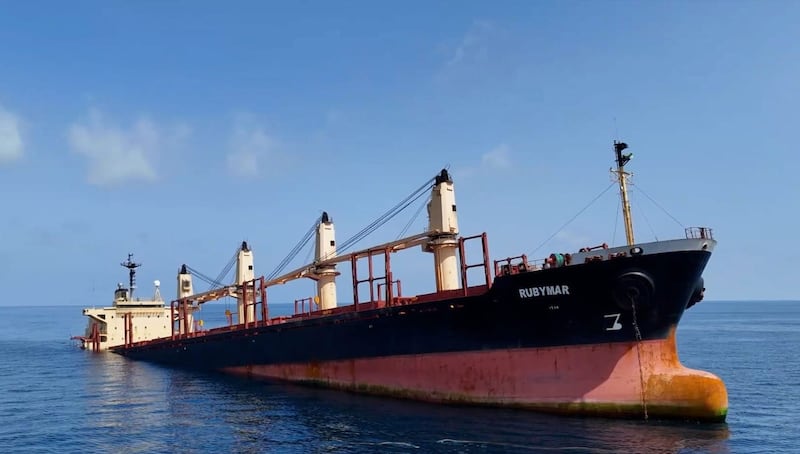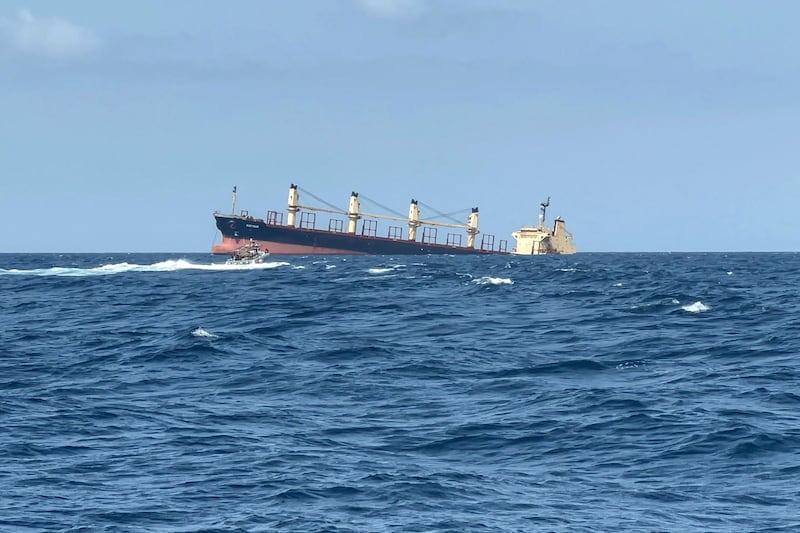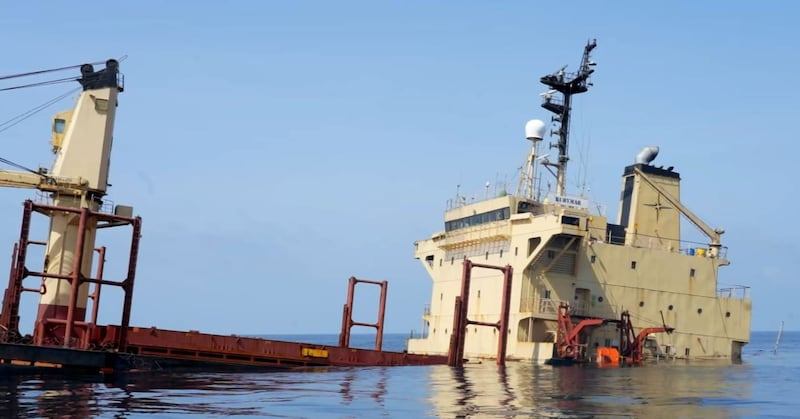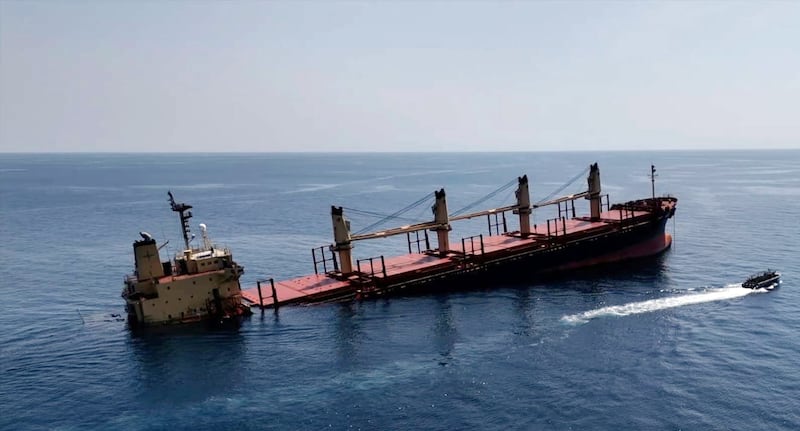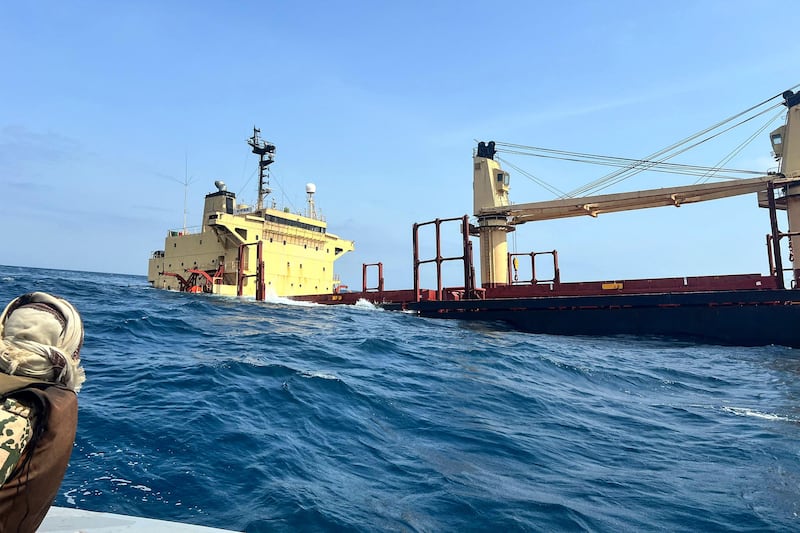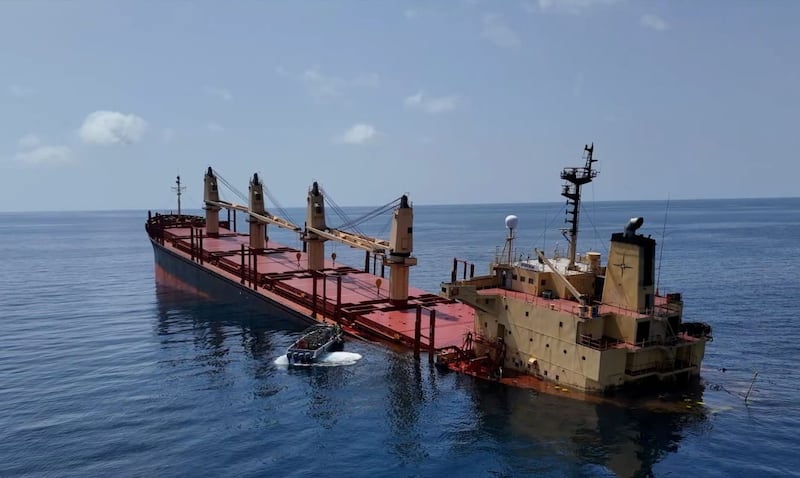The US and UK are struggling to establish the size of the Houthi missile stockpile after stopping their surveillance of Yemen eight years ago, military analysts have said.
The allies have paid a high price for failing to maintain intelligence operations in Yemen as they struggle to find targets to strike while the Iranian-backed rebels continue their attacks on shipping.
It was unclear precisely how many weapons the Houthis have been provided with by the Iranians or have built themselves, said Fabian Hinz, a military expert at the IISS think tank.
“The question is, did the Iranians ship only small batches in order to increase their leverage [with the Houthis] or did they build up an arsenal with strategic depth?” Mr Hinz told The National.
“Another question is, how much of their weapons are locally produced?”
A lack of detailed intelligence has made it “near impossible” to determine how badly the Houthis' missile stockpile has been damaged by US-led air strikes, said military analyst Tim Ripley.
But US official reporting has stated it has struck missile launchers before they were fired, suggesting that real-time intelligence gathering has improved.
Challenging reconnaissance over Yemen
After the end of the campaign against Al Qaeda in 2015, the US withdrew much of its surveillance over Yemen, making it unclear how large a stockpile the Iranians provided to the Houthis.
Intelligence gathering has been made more difficult by the size of the country, which is about equal to that of France, and the Houthis' skills at camouflaging their weapons, developed over earlier wars on the peninsula.
“They are trying to find mobile weapon targets in a very large country starting from scratch, and with no boots on the ground, so it's near impossible to judge the extent of damage,” Mr Ripley said.
And having lost two advanced MQ-9 Reaper reconnaissance drones over Yemen, the US does not have the benign surveillance environment it had in Afghanistan, “which makes it rather challenging”, he said.
In the 150 allied attacks since the first on January 12, the US and UK have hit 120 missile launchers, more than 10 surface-to-air missiles, 40 storage and support buildings and 15 drone-storage buildings, according to US figures.
New footage shows Houthi missile hitting Greek cargo ship in Red Sea
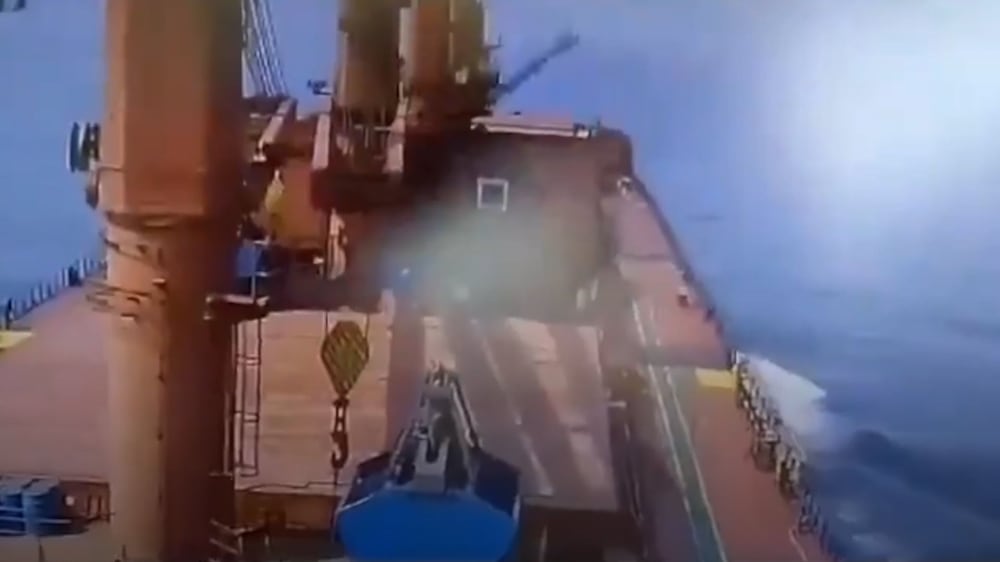
“One thing to note is the number of Centcom [US Central Command] announcements about targeting launchers just before launch does indicate both good intelligence and good targeting capability,” Mr Hinz said.
“But the Houthis have become adept at hiding them so you only have a very short time window for striking before launch.”
The RAF Typhoon fighter-bombers and US F-18A Hornets are able to give accurate “battle damage assessment” as they have to fly over their targets before releasing their bombs, the flight of which is video-recorded.
Houthi arsenal
Since starting their Red Sea and Gulf of Aden campaign on November 19, the Houthis have launched at least 57 attacks on naval and commercial shipping.
But the increased number of warships in the Red Sea, bolstered by the arrival in the past few weeks of the EU force of six naval vessels, has also meant that even when the Houthis managed to launch strikes, fewer are getting through.
However, they were still able to hit the British-registered Rubymar bulk carrier last month with anti-ship missiles.
The Rubymar finally sank on Saturday, which could cause serious ecological damage with its cargo of ammonium phosphate sulphate fertiliser. It is also the first ship to be sunk in the campaign.
Pentagon spokeswoman Sabrina Singh acknowledged in a media briefing last week that the Houthis had not been deterred by the Operation Poseidon Archer strikes.
“We never said we’ve wiped off the map all of their capabilities,” Ms Singh said. “We know that the Houthis maintain a large arsenal.
"They are very capable. They have sophisticated weapons and that’s because they continue to get them from Iran.”
Impact on Red Sea shipping
The Houthis' ability to mount just one successful attack gives them a “giant impact on civilian shipping” leading to soaring insurance rates, which was a “the real challenge with this campaign”, Mr Hinz said.
“It’s fair to say that it’s impossible to destroy 100 per cent of their arsenal.”
He said that while the shipping strikes will probably stop when there is a ceasefire in Gaza, the Houthis will be able to boast that they were undefeated by the US and will be able to use the tactic again in the future.
“They can say that, ‘We fought until the very last day and the Americans could not defeat us’,” Mr Hinz said.
“That gives them the narrative leverage that they have this tool established that can be used again and again against Red Sea shipping.”


